The Power of Memes in Social Media Marketing
Introduction
In the vast expanse of the internet, where trends come and go in the blink of an eye, memes have emerged as a potent force in shaping online culture. These humorous, relatable, and often absurd pieces of content have captured the hearts of millions, spreading like wildfire across social media platforms. But memes are more than just a source of entertainment — they have become a valuable tool in the arsenal of social media marketers.
By using memes, brands can tap into the internet’s collective consciousness, generating buzz, driving engagement, and even boosting sales.
- What is a Meme?
So, what exactly is a meme? The concept of memes has evolved over time, originating from evolutionary biologist Richard Dawkins’ 1976 book “The Selfish Gene.” Dawkins proposed the idea of memes as cultural equivalents of genes, arguing that ideas, behaviours, and styles could be transmitted and evolve in a manner similar to genetic evolution.
In the internet age, memes have taken on a new form, encompassing a wide range of content, from images and videos to pieces of text and even dances.
The rise of social media has transformed memes into a powerful marketing tool. Platforms like Twitter, Instagram, and TikTok have created an environment where memes can spread rapidly, reaching vast audiences and generating significant engagement.
- Here are some helpful meme marketing tips:
Effective Meme Marketing Strategies

1. Know Your Audience:
Understand your target audience’s interests, humour, and values to create memes that resonate with them. Recognize that different audiences require tailored approaches, just like Netflix creates memes that appeal to their audience’s love of TV shows and movies.
And Barkbox tailors their memes to dog owners’ passion for their furry friends.
Recognize that different audiences require different approaches, just like how:
-
A meme that a 20-year-old likes might not add with a 50-year-old
-
A humour style that works for one industry might not work for another
2. Engage Authentically:
Participate in meme culture with genuine enthusiasm, rather than exploiting it for commercial gain. Show appreciation for internet humour and avoid forced or inauthentic uses.
3. Stay Current:
Keep pace with the latest internet and pop culture trends to ensure your memes remain relevant and effective.
4. Maintain Brand Consistency:
Align your meme content with your brand’s values, tone, and messaging to reinforce your identity and avoid diluting it.
5. Be Authentic and Humorous:
Use funny memes to captivate your audience, but avoid offensive or controversial content. Ensure memes fit naturally into your content and don’t feel forced.
6. Create Shareable Content:
Design memes that are easily shareable across multiple social media platforms to maximise organic reach.
7. Use Memes Carefully:
Employ memes strategically to complement your overall content strategy, avoiding overuse and maintaining a balanced approach.
Famous Memes:
Let’s take a closer look at some famous memes that helped big brands score big time:
-
Grumpy Cat: Grumpy Cat’s permanent scowl has been used by brands like 4chan and Reddit to promote their products and services.
-
Distracted Boyfriend: This meme features a man looking at another woman while his girlfriend or wife looks on in disapproval. Brands like Samsung and Burger King have used this meme to poke fun at their own products and services.
-
Pepe the Frog: This meme originated from a cartoon by Matt Furie and was later co-opted by internet users. Brands like Gucci and Diesel have used Pepe to promote their products and services.
-
Salt Bae: This meme features a chef seasoning meat with a dramatic flourish. Brands like Coca-Cola and McDonald’s have used Salt Bae to promote their products and services.
These are just a few examples of how memes have been used in social media marketing. By using memes, brands can tap into the internet’s collective consciousness, generating buzz, driving engagement, and even boosting sales.
Conclusion
Memes are a powerful tool in social media marketing. They help brands connect with people in a fun and memorable way. By using memes, brands can make people laugh, smile, and share their content with others. This can lead to more engagement, buzz, and even sales. To get the most out of memes, brands need to understand what makes them tick. They need to be creative, timely, and authentic. When done right, memes can help brands build a strong online presence and connect with their audience in a way that’s both fun and meaningful
